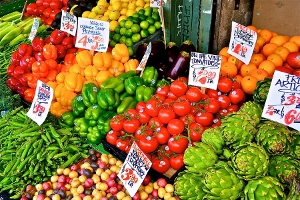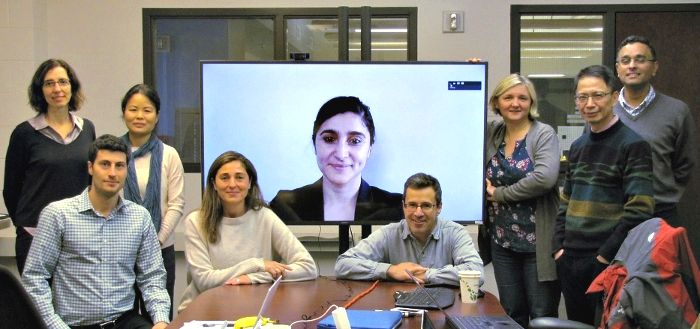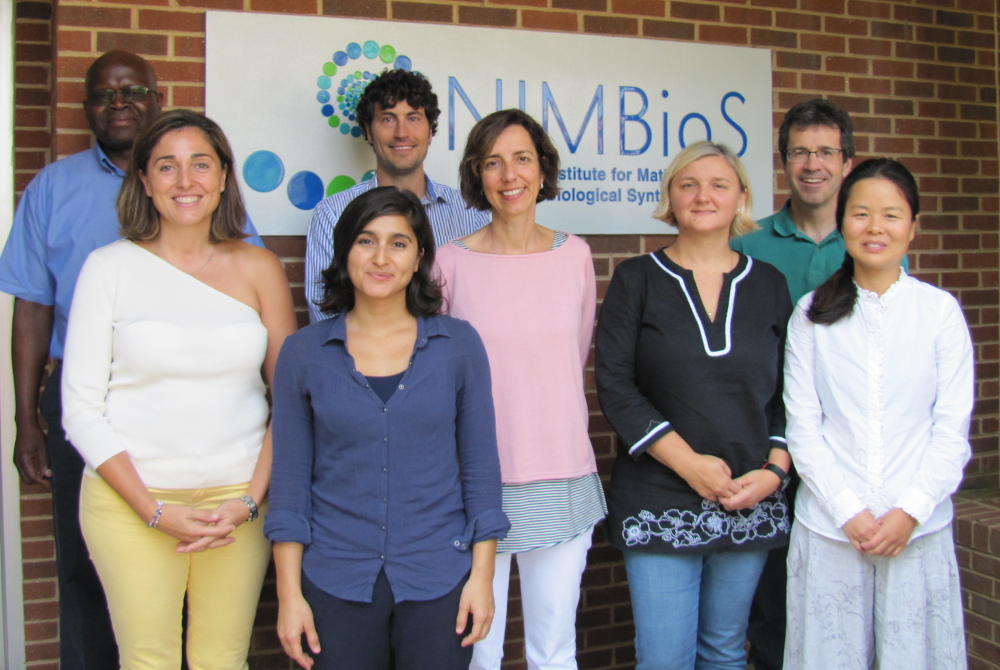| Description | Participants | Summaries | Products |
|---|

Archived NIMBioS Working Group
Models of Produce Contamination
Topic: Fresh produce food safety at the interface between mathematical modeling and empirical data
Meeting dates: April 13-15, 2016; January 11-13, 2017; September 27-29, 2017
Organizers:
Lydia Bourouiba, Civil & Environmental Engineering, Institute for Medical Sciences and Engineering, Massachusetts Institute of Technology
Renata Ivanek, Population Medicine and Diagnostic Sciences, Cornell Univ.
Daniel Munther, Mathematics, Cleveland State Univ.
Jianhong Wu, Mathematics, Centre for Disease Modelling, York Institute for Health Research, York Univ.
Objectives: Foodborne illnesses associated with fresh produce continue to impose heavy public health and socio-economic burdens. To advance produce food safety it is critical to adopt a mechanistic approach that uses mathematical modeling for holistic understanding of processes shaping pathogen introduction and transfer at the preharvest level. Towards that goal, we assembled researchers from food science, microbiology, epidemiology, mathematics and bio-statistics, and government agencies to develop detailed pathogen/produce specific mathematical models. We will use Escherichia coli as an indicator of fecal contamination and design dynamic models of E. coli introduction into a spinach field via contaminated irrigation water, manure spreading or intrusion of wild/domestic animals and analyze the subsequent spread, replication and decay of E. coli within a field occurring through the interplay of irrigation, rain (flood) and ambient temperature. The modeling approach will rely on the parameter estimations from our data and using differential equations (partial and ordinary), fluid dynamics modeling (theory and numerical work) and multiscale modeling. The developed models will elucidate how underlying small scale processes, such as raindrops or irrigation types, contribute to the patterns of spread of contaminants in a field. These results are expected to inform future experimental work and redesign of the existing macroscale (e.g., risk assessments) models, both of which will uniquely support submission of research grant proposals. Ultimately, these efforts will lead to development of improved tools to prioritize prevention and surveillance efforts in produce food safety.
Ideas for this working group benefited from discussions at the NIMBioS Investigative Workshop on Modeling Contamination of Fresh Produce, organized by Yaguang Luo and Daniel Munther, April 24-25, 2014.

Meeting Summaries for NIMBioS Working Group:
Models of Produce Contamination
Meeting 1 summary. During the first meeting, we discussed the current state of observational, experimental and modeling studies associated to produce contamination at the pre-harvest stage. In addition to reviewing available data and known risk factors, we identified particular gaps and mechanisms that can be informed via mathematical modeling. We extensively discussed the modeling approach, framing questions at the local plant scale up to the field level as well as assessing the impact/relevance of model results on public health. We concluded the meeting by defining objectives for group members during the interim as well as for meeting 2.
Meeting 2 summary. During the second meeting, the team members shared updates from ongoing research conducted with a focus on mathematical modeling of microbial community die-off on contaminated leaves; pilot experiments for estimation of model parameters; and efforts to secure grants in order to conduct new experimental studies. In addition, the team extensively discussed approaches to model E. coli dynamics on contaminated leaves and contaminated soil and the factors that need to be considered given the available data in the literature and among team members. We concluded the meeting by refining three modeling directions for meeting 3: plant, soil and water.
Meeting 3 summary. During the third meeting, the team members discussed specifically developing and synthesizing ongoing research results since the two previous meetings (and the interim) into a relevant modeling framework to be split in the form of two manuscripts. The first involves mathematical modeling of E. coli/Salmonella population dynamics on pre-harvest lettuce leaves. This modeling aims at testing hypotheses regarding the coupling of communities with temperature and leaf moisture. The second regards another mathematical model examining the population dynamics and persistence of E. coli/Salmonella in soil. The group reviewed progress on other parts of the ongoing activities. Preliminary drafts were discussed and timeline for paper submissions and continued collaborations were discussed. In addition, the group discussed updates concerning funding, future meetings and upcoming follow-up conferences to continue building the field and momentum of the group.
 |
| Meeting 1 participants (L to R): Martin Wiedmann, Jianhong Wu, Aamir Fazil, Lydia Bourouiba, Ana Allende, Maria Brandl, Renata Ivanek, Rongsong Liu, Daniel Munther, Parthasarathy Srinivasan, David Oryang. |
 |
| Meeting 2 participants (L to R): Maria Brandl, Daniel Munther, Rongsong Liu, Ana Allenda, Lydia Bourouiba (virtual), Martin Wiedmann, Renata Ivanek, Jianhong Wu, Parthasarathy Srinivasan |
 |
| Meeting 3 participants (L to R): David Oryang, Ana Allende, Lydia Bourouiba, Daniel Munther, Maria Brandl, Renata Ivanek, Martin Wiedmann, Rongsong Lui. |
NIMBioS Working Groups are chosen to focus on major scientific questions at the interface between biology and mathematics. NIMBioS is particularly interested in questions that integrate diverse fields, require synthesis at multiple scales, and/or make use of or require development of new mathematical/computational approaches. NIMBioS Working Groups are relatively small (up to 10 participants), focus on a well-defined topic, and have well-defined goals and metrics of success. Working Groups will meet up to 3 times over a two-year period, with each meeting lasting up to 2.5 days.
A goal of NIMBioS is to enhance the cadre of researchers capable of interdisciplinary efforts across mathematics and biology. As part of this goal, NIMBioS is committed to promoting diversity in all its activities. Diversity is considered in all its aspects, social and scientific, including gender, ethnicity, scientific field, career stage, geography and type of home institution. Questions regarding diversity issues should be directed to diversity@nimbios.org. You can read more about our Diversity Plan on our NIMBioS Policies web page. The NIMBioS building is fully handicapped accessible.
NIMBioS
1122 Volunteer Blvd., Suite 106
University of Tennessee
Knoxville,
TN 37996-3410
PH: (865) 974-9334
FAX: (865) 974-9461
Contact NIMBioS


